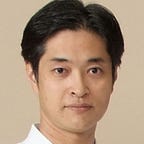Koryū Semi-Jiyū Kumite
In the article “Irikumi and Semi-Jiyū Kumite,” I noted that the meaning of irikumi changed from jiyū (free) kumite by kakede to semi-jiyū kumite. However, I also mentioned the possibility that irikumi may have meant semi-jiyū kumite long before that, depending on the discovery of further historical documents.
Leaving aside the question of terminology for the moment, some testimonies suggest that the practice of koryū (old style) semi-jiyū kumite has existed since the days of the Ryukyu Kingdom. For example, Chibana Chōshin told Higa Seitoku the following anecdote:
It was during a kumite training session between Matsumura Sensei and Itosu Sensei, when Matsumura Sensei said to Itosu Sensei, “Your punches are powerful enough to break rocks, but they won’t hit me. Here, here, what’s the matter?” He let Itosu Sensei strike freely, quickly dodging and parrying all of the attacks.
I have previously introduced this anecdote. Higa Sensei studied under Chibana Sensei for a short time in 1950 before studying under Uehara Seikichi (see note), and although there is no expression such as a final push with the palm of the hand as in Miyagi Sensei’s practice, it shows how he (Matsumura) let his student strike unilaterally and did not attack himself.
Motobu Udundi also has a similar semi-jiyū kumite practice method, although it is not called…
